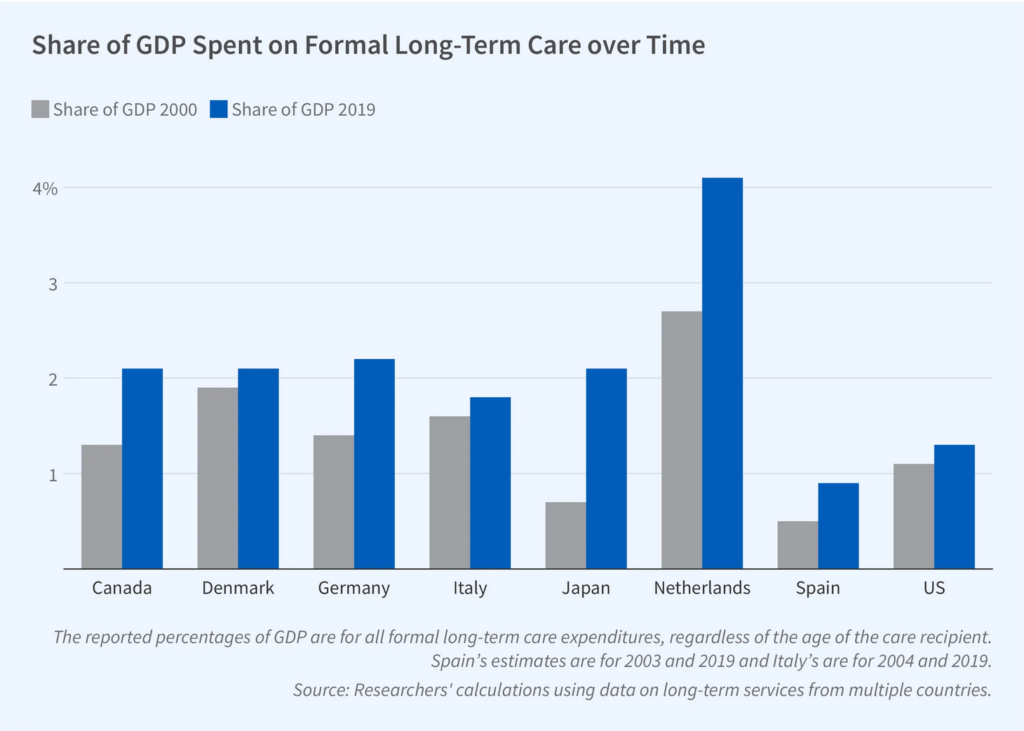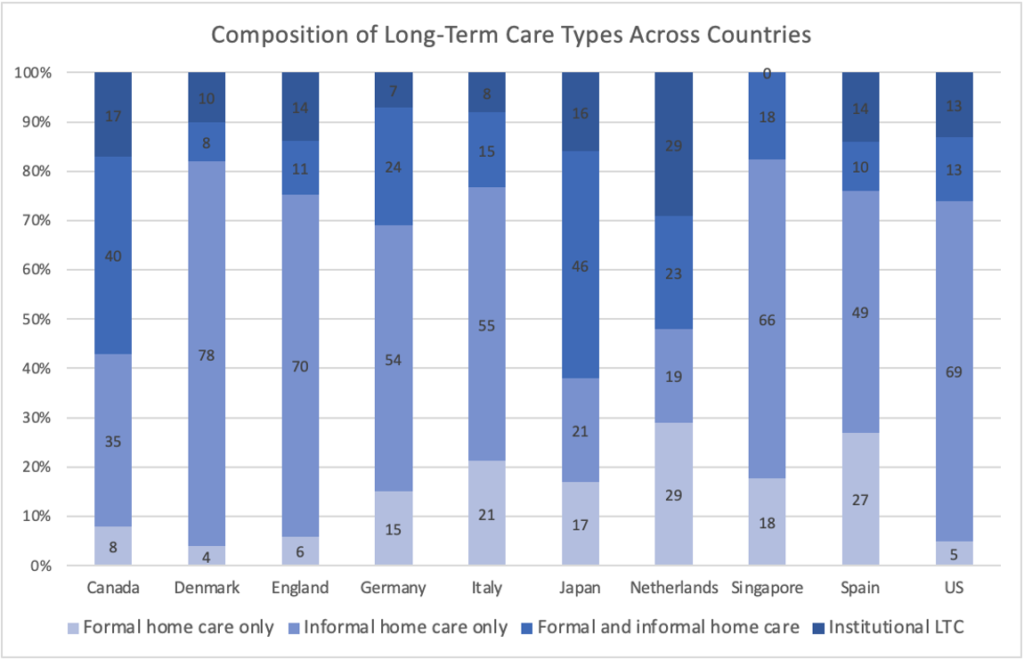[ad_1]
An important paper by Gruber et al. 2023 appears on the evolution of long-term look after ten international locations: Canada, Denmark, England, Germany, Italy, Japan, the Netherlands, Singapore, Spain and america. Lengthy-term care is split into three classes: institutional care, formal dwelling care, and casual care. For the ten international locations examined, the paper finds that:
- Nationwide spending on LTC. Lengthy-term care spending,includes 2.1% of GDP on common, and has grown by 60% as a share of GDP from 2000 to 2019.
- Value for sufferers. The price of long-term care could be past the monetary means of a giant fraction of the aged in every nation. Due to this, the general public sector bears a lot of the value (e.g., ~2/3 of LTC value within the US is roofed by authorities)
- Spending on formal vs. casual care. Nations’ share of spending on dwelling care (vs. institutional) varies from 23% in Spain to 63% in Japan
- Value of casual care. Casual care includes a considerable portion of complete long-term care and the price of this casual care, by way of foregone wages and different prices, must be included in any measure of the true value of long-term care
- LTC threat: Lengthy-term care wants rises quickly with age and with incapacity
- Formal vs. casual care: A minority of aged receiving help rely solely on formal care (i.e. institutional care or paid dwelling care) whereas the bulk obtain at the very least some casual care from household or different unpaid caregivers
- Employee gender. Girls present the overwhelming majority of formal care in all these international locations however there’s a considerably extra equal distribution of care throughout genders within the provision of casual somewhat than formal care.
- Employee wages: Extremely expert formal caregivers in all international locations are pretty nicely compensated, normally at or above the typical economy-wide wage, however there’s substantial variation throughout international locations within the compensation of low-skilled caregivers, with wages starting from lower than one-half of the typical wage in america to greater than three-quarters of the typical in Denmark and Japan
Outcomes


Information
What knowledge units can be utilized to review long-term care wants? The Gruber et al. paper makes use of the next sources, all largely modelled on HRS. They’re nationally consultant longitudinal surveys of people beginning at round age 50.
- US. Well being and Retirement Examine (HRS)
- Europe: The Survey of Well being, Getting old, and Retirement in Europe (SHARE)
- UK. English Longitudinal Examine of Getting old (ELSA),
- Japan. Japan Examine of Getting old and Retirement (JSTAR)
[ad_2]

